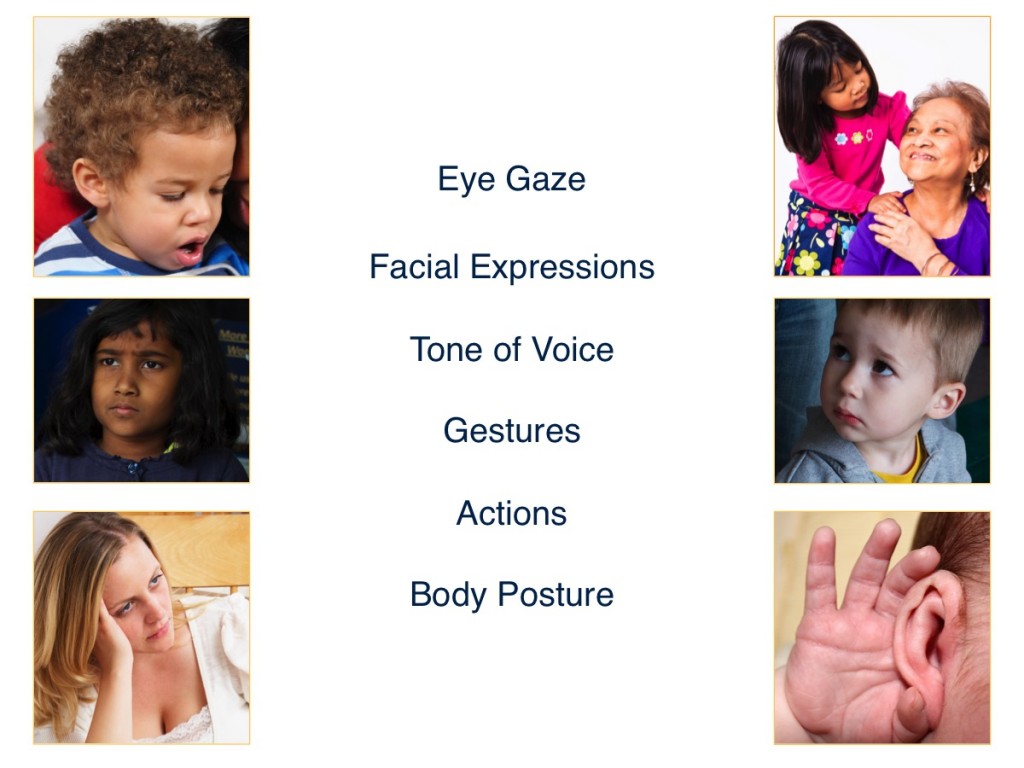
During our everyday interactions, we use many different social signals when we express emotions to one another. For example, we convey emotion through our facial expressions, tone of voice, and body posture and gestures. Our eye gaze shows others where we are directing our emotions. These cues help children determine what and when to learn. However, babies have a lot of growing and developing to do before they are able to use all of these cues. With time they will be able to interpret and predict other people’s emotions in ongoing seamless social interactions.
Children begin to learn about emotions through dyadic or back-and-forth interactions with their caregivers. This begins at birth. The word “dyadic” indicates that it is a two-way exchange. A caregiver smiles and his baby smiles back. A child pouts with her bottom lip to let her mother know she is upset, and the mother acts accordingly. Caregivers and children relate to each other through emotional cues. Children develop a richer emotional understanding of other people during these kinds of interactions.
Toward the end of their first year, children begin to engage in triadic interactions. A triadic interaction expands the dyadic adult-child interaction to include another object. Caregiver and child share attention to the same object or event in their environment. Imagine Arjun’s caregiver pointing to a dog on the street. Arjun is likely to follow her pointing finger and eye gaze to look at the same object. Infants then use the adult’s emotions and reactions to gain more information about the object.
-
- Dyadic interaction
- a back-and-forth exchange between caregiver and child
- Self-regulation
- the ability to control our behaviors, emotions, and impulses
- Social emotional development
- learning to express and manage emotions and form positive relationships
- Social referencing
- looking to an adult for emotional information in an uncertain situation
- Triadic interaction
- a back-and-forth exchange between caregiver, child, and object